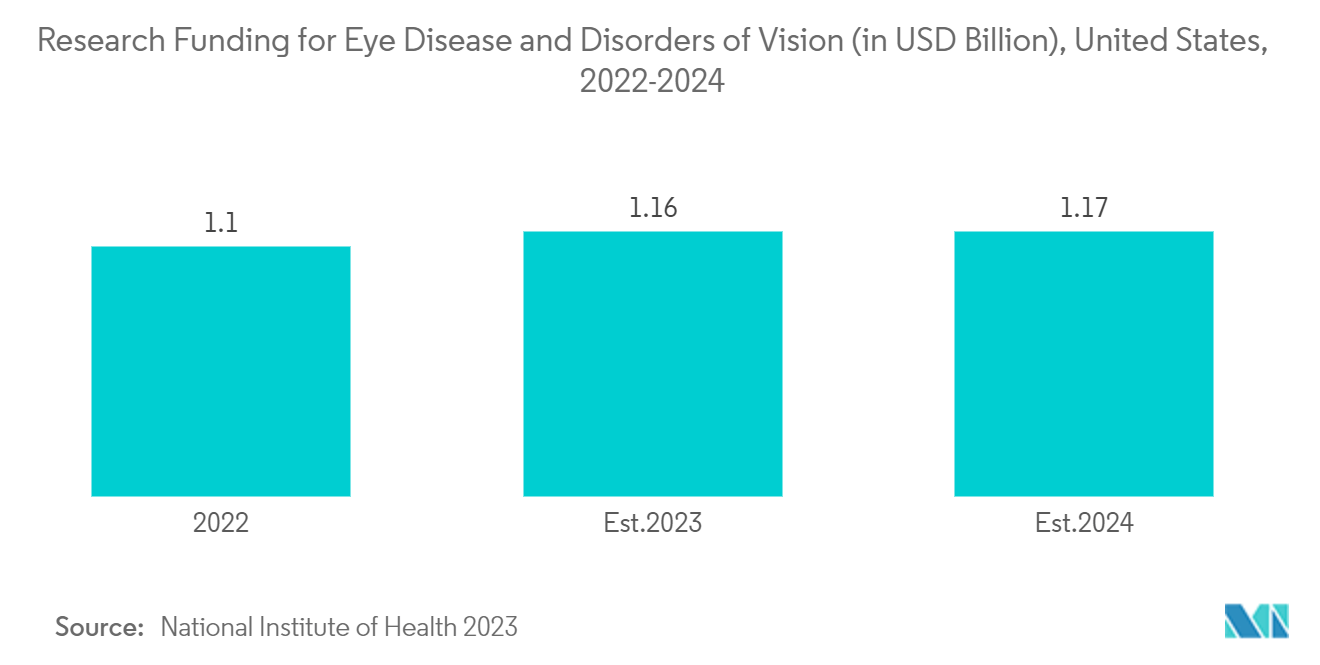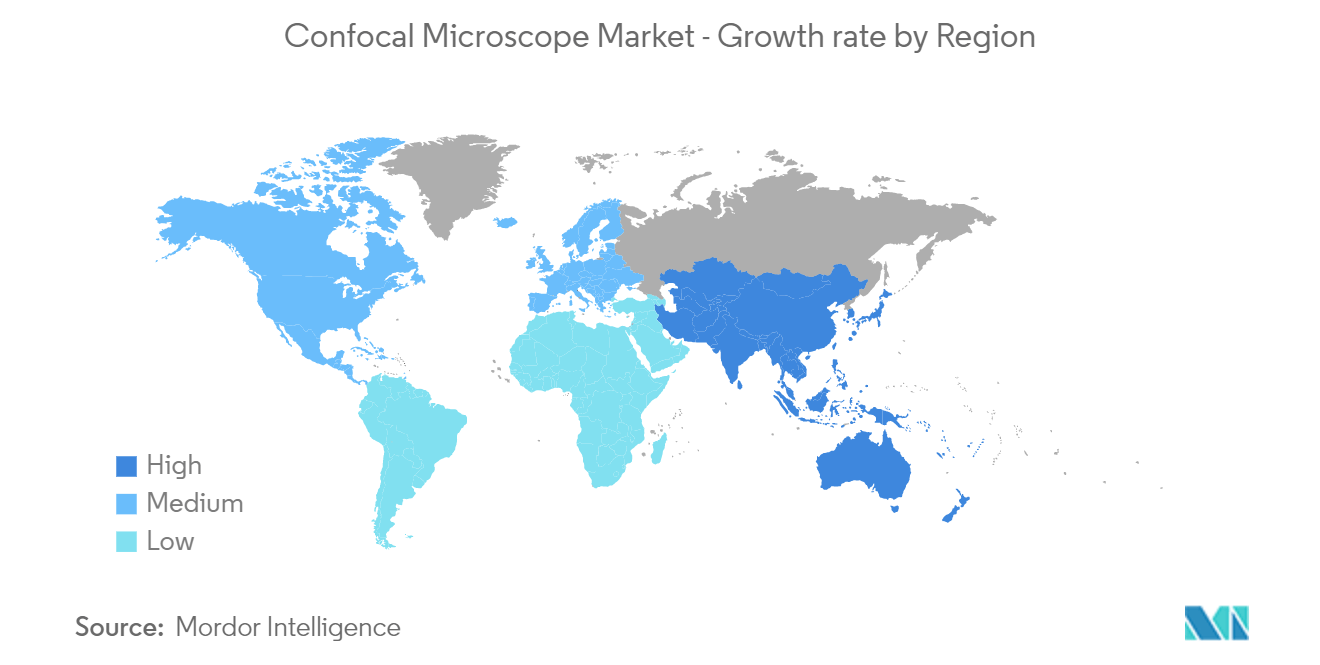Market Trends of Confocal Microscope Industry
Laser Scanning Microscopes are Expected to Witness Significant Growth Over the Forecast Period
In a laser scanning confocal microscope (LSCM), a laser beam is swept over the sample using scanning galvanometer mirrors. Typically, the laser is directed onto a pair of scanning mirrors, sweeping the beam in the x and y directions of a single field of view and then moving incrementally across the entire sample to produce an image of the optical section or slice. Laser scanning microscopes are used in biological research to obtain high-resolution, high-contrast images of the cell or tissue.
Factors such as an increase in the adoption of laser scanning microscopes in identifying various diseases and a rise in innovations in LSCM are expected to drive the segment's growth during the forecast period. For instance, in April 2022, researchers from the Fraunhofer Research Institute stated that they had developed a new rapid technology with which doctors can determine if a tumor is fully removed from the body during cancer surgery. This technology combines a laser scanning microscope and fluorescent tumor markers with which doctors can detect any remaining cancer cells immediately after the surgery. Thus, the advantages of laser scanning microscopes in chronic disease care are expected to drive the segment's growth over the forecast period.
Several advancements are being made in laser scanning microscopes to improve accuracy. For instance, in February 2022, scientists from Durham University's Chemistry Department developed the world's first laser scanning confocal microscope that can harness circularly polarized light (CPL) to differentiate left and right-handed molecules, also known as chiral molecules. The CPL laser scanning confocal microscope (CPL-LSCM) is one of the first of its kind that can detect and track luminescent chiral molecules in cells. It has extensive potential to be used by the imaging and biomedical research community globally.
Hence, owing to the development of innovative LSCMs and the rise in the adoption of LSCMs to create detailed 3D pictures of cell organelles, the segment is expected to witness steady growth during the forecast period.

North America is Expected to Witness Significant Growth Over the Forecast Period
The North American region is expected to witness significant growth in the confocal microscopes market, mainly due to the prevalence of ophthalmic diseases and the high investments in research and development activities in North America. There is a rising prevalence of eye diseases, such as glaucoma, cataracts, macular degeneration, and diabetic retinopathy, in North America, which is anticipated to propel the market during the forecast period. For instance, according to the April 2022 report of Statistics Canada, 86% of Canadians between the ages of 45 and 85 wore glasses or contacts, and 6% had vision impairments, indicated by binocular acuity of less than 20/40. Hence, owing to the high prevalence of ophthalmic disorders in the region, the confocal microscope market is expected to grow during the forecast period.
Also, the increasing geriatric population in the nation, prone to ophthalmic disorders, is expected to boost the growth of the market significantly. For instance, according to a report published by the Administration for Community Living (ACL) in May 2021, the geriatric population in the United States has been increasing significantly over the years, with the number of people over the age of 65 being projected to rise to 80.8 million by 2040 and to 94.7 million by 2060. Thus, the increasing elderly population, who are prone to vision impairments, is expected to boost the growth of the market studied during the forecast period.
Additionally, an increase in research studies utilizing confocal microscopy in the region is expected to fuel market growth during the forecast period. For instance, in March 2022, the Memorial Sloan Kettering Cancer Center sponsored a clinical trial to evaluate the effectiveness of radiation therapy (RT) guided by the new reflectance confocal microscopy (RCM)/optical coherence tomography (OCT) device for basal cell carcinoma (BCC).
Hence, North America is expected to witness significant market growth during the forecast period due to the increase in ophthalmic complications, the rise in the geriatric population, and the adoption of confocal microscopy in research studies.


